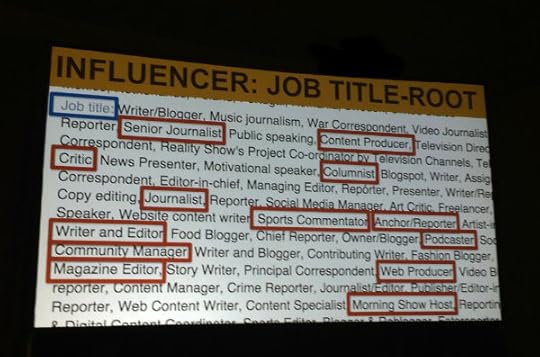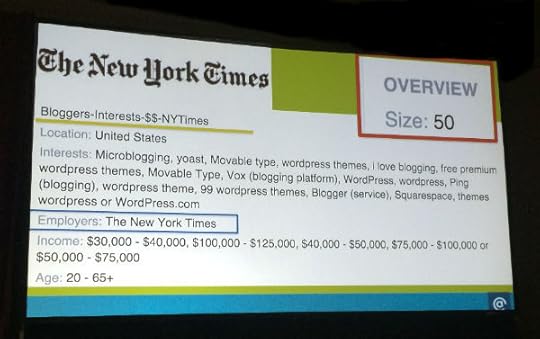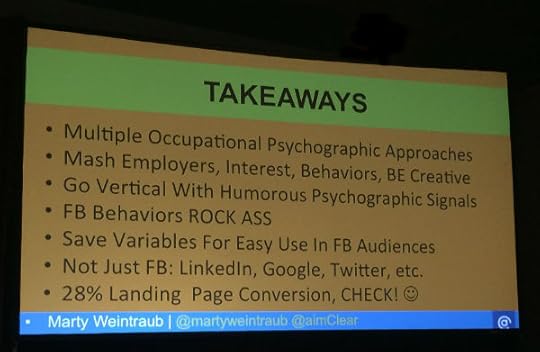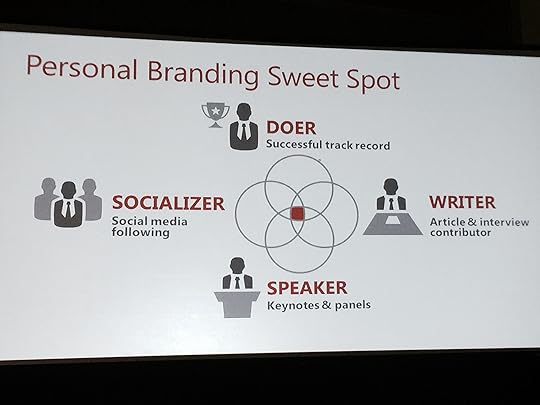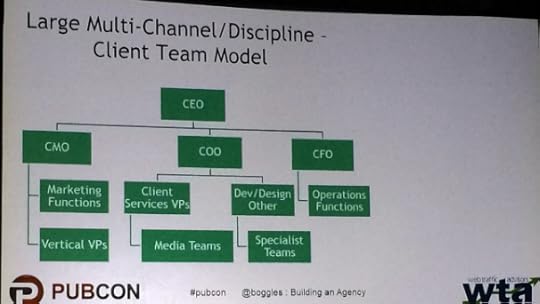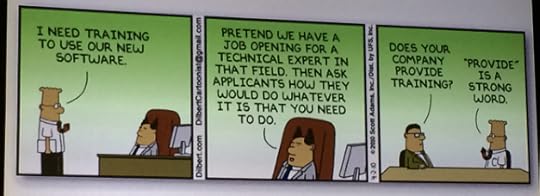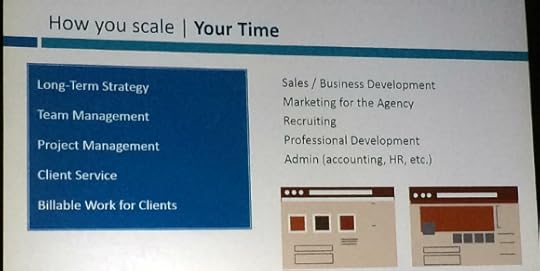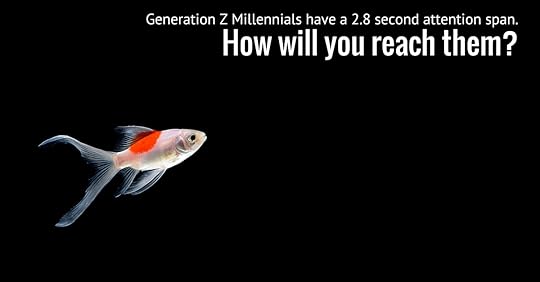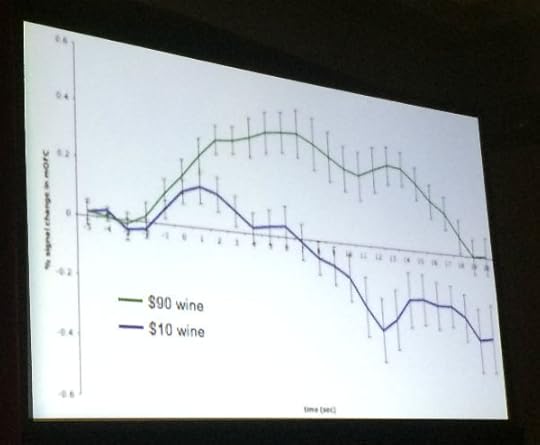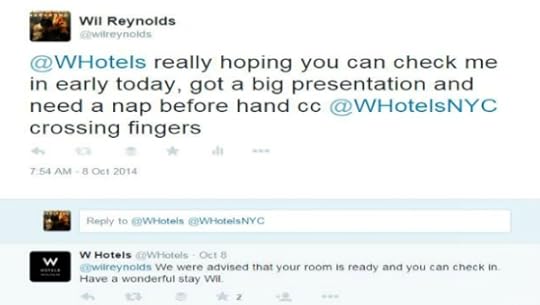Bruce Clay's Blog, page 21
October 12, 2015
Social and Mobile PR Secrets
Social and Mobile PR Secrets was originally published on BruceClay.com, home of expert search engine optimization tips.
Do you want press for your business? Yes please! Here’s how to use social media in traditional and new ways to reach and influence the media. New opportunities to be covered by today’s speakers including making sure your content is mobile friendly and targeting the media through paid Facebook promotions.
Moderator: Melanie Mitchell (@melaniemitchell)
Speakers:
Lisa Buyer, President/CEO, The Buyer Group (@lisabuyer)
Marty Weintraub, Founder, aimClear (@aimclear)
Murray Newlands, Founder, Due (@murraynewlands)
Murray Newlands: How to Meet the Press
How to get press? That’s the big question for all of us. He’s getting emails and messages asking him, as a writer for Forbes, requesting he write about your company. He asks why should he? You have to be amazing or tell a great story. Ask: why am I creating the content? Ask: who are you writing for? Ask: why do you stand out? Ask: what does my audience care about?
Generally, people care because they have a problem that needs to be solved. Go back to the basics. What’s the company do, what problem does it solve, who are you solving it for, how can you present the context to the audience and illustrate the solution.
When you answer that question, look at the publications you’re targeting and then research that publication to see what is the most popular content there. Fit your story into that format. When they write about you, promote the heck out of it. Writers are trying to get their content to have tons of views and shares. If someone takes the time to write about your company, take that third-party endorsement and share that with your current audience and to grow a new audience. Use Outbrain to promote it. Make it a promoted tweet.
How do you meet press and get started with outreach?
Go to events, especially targeted events, and meet press in person. Find a local media group meet up and go to it. Those press people also probably have social profiles you can find.
Look at who is writing about your competitors and who is doing promoted posts about your competitors. Search for the word “sponsored” and that means that they do sponsored posts, they’re open to commercial opportunities.
Your email box is constantly full of spam. Spam is someone you don’t know about something you don’t care about. If you get to know someone and what they like then your subject line/title can be one line about something they like and care about.
Lisa Buyer: Social/Mobile PR – the Hook-Up
Murray introduced the concept of public relations. There’s overlap with social, mobile and visual and opportunity to reach your customers and prospects. It’s critical to have this as part of your strategy.
Opportunity of Mobile Bublic Relations
The 2015 trends for journalists using social:
Mobile-friendly content is important to them.
Faster turnaround times for journalists.
Social media is a major influence.
Journalists are looking for original video (people and products).
Small staffs in newsrooms is a pain point so make their jobs are easy as possible.
Mobile devices are the preferred method of reading. Even though you may be crafting something from a laptop or desktop, your reader is probably reading from their mobile device.
78% of Facebook users aces the content from their mobile phones at least 1x a month. Think mobile first! Social advertising is growing to $35.98 by 2017. Journalists are trying to grow their own following – can you share their content? They’ll notice you and think to look at you as a source.
Time online is more common on mobile than desktop. Mobile PR strategies for you to implement:
Pin a featured post to the top. The majority of media writers will look at your branded social media to see what’s new and happening with your company.
Think of your cover images like magazine covers. Magazines change their cover monthly, not the same every month. Guy Kawasaki said it best in his keynote yesterday – use it as a narrative.
Share all your news with a solid visual. She can’t say enough about video, video, video. Marty Weintraub is doing an amazing job with his video news team. aimClear has a video production studio with weekly distribution and on-topic reporting. Treat your brand the same way and tell news on your industry, not your company.
Think of all the screen sizes. Canva is a great way to make sure that all your cover images are optimized, visual and working for you at the highest possible resolution. Mobile users tend to share social media content 2x as much as those on a desktop computer.
How can you optimize social for mobile?
Instagram Video – use Instagram to tell your brand story.
Get organic exposure you’re looking for:
Optimizing mobile PR content:
Get to the point very quickly. Look at things like load time and high-res visual quality.
Use the mobile apps that your audience is on. Giving equal weight to everything will cause you to burn out, so focus.
Mobile apps for PR story telling:
Add Blab.IM to the list. When she submitted her presentation when it was due a month ago, Blab wasn’t even around.
Optimize local business for Yelp:
Make sure you’re watching your reputation as it evolves on social media.
Mobile PR audit on social media – going through your assets to see if you’re optimized. Check out new channels and see if they make sense for your brand. Facebook just launched Mentions which is currently only available for verified celebrities.
For measurement, consider your KPIs:
Takeaways:
Little tweaks can make a huge difference. Continue to evolve, create benchmarks, monitor and adjust. In three months things may be different so stay on top of the trends.
Marty Weintraub: Today’s Rad Facebook Audience Targeting Hacks
This is all new material and he’s excited to share it with us. There will be a download of an import into Facebook Power Editor. He’s going to talk about targeting media roles and influencers.
“Roots” – a new vernacular he hopes we’ll become familiar with by the end of this.
Know what you call branding to media people? Public relations.
This applies to all channels with psychographic targeting. Google, Blue Kai, Twitter and Facebook.
When you’re fishing for journalists it has to be more than good, it has to be stunning. Ask yourself does anybody care about this or is it an inside joke?
Targeting Media Influencers
There are a couple ways to approach it (ad all psychographic targeting). Deciding how to slice up humanity requires you just go for it and say “this thing mostly does it for me.”
Persona rooting tactic #1: Job titles.
More Demographics > Work > Job Titles
Examples include “journalist,” “correspondent,” and “tumblr.”
Next, segment the job titles bucket (the root) out by interest and income.
Look for clarifiers in the interest bucket which signals they’re a do-er (like “writer”).
Persona rooting tactic #2: Behavior
He loves rooting things in the behavior bucket because it’s intent-based. When you root persona in the behavior bucket, there’s often money and stuff they like to do.
Little Blue Book explains sources, uses and targeting slices excluding Facebook, Google, Twitter.
Persona rooting tactic #3: Bloggers as the interest root
If you take business marketing as the behavior on top of the blogger interest root, you’re focusing your target.
Add Industry like “arts, entertainment, sports and media,” if that’s your target.
You can get “creepy” next. How about start from bloggers as interest and sports and media as industry and then add all the sports teams as employers. Now you’ve really targeted a group.
You can find the top 50 newspapers in America in the employer bucket.
Here’s all the people who blog for the New York Times:
As you drive people into the system, cookie them for retargeting or remarketing. It’s your job to keep following them and run search campaigns for them and save them as lists.
Want to subscribe to the Super Secret Psychographic Social Distribution Weekly Tip Sheet? Get one of these pieces of targeting every week. Email Marty at aimclear.com.
Here’s the CSV Power Editor download [see slide]
Takeaways:
October 9, 2015
Personal Branding & Social Strategy Advice You HAVEN’T Heard, Live from #Pubcon
Personal Branding & Social Strategy Advice You HAVEN’T Heard, Live from #Pubcon was originally published on BruceClay.com, home of expert search engine optimization tips.
Personal branding and social strategy – it’s a subject close to all digital marketers’ hearts. Mark Traphagen, Matt Craine and Mel Carson are speaking on this hot topic at Pubcon Las Vegas. Hear what they have to say on the importance of personal branding in a world where everyone is Googling everyone else.
Real People Power for Brands
Mark Traphagen (@MarkTraphagen), senior director of online digital marketing at Stone Temple Consulting kicks it off. How can personal brands work for business? Businesses need to make real connections, he says, and that’s hard to do if you’re simply a brand. You need to create emotional connections with your consumers.
“How do you take something as dead and inert as a brand and make it alive?” asks Traphagen.
“How do you take something as dead and inert as a brand and make it alive?” – @MarkTraphagen
Click To Tweet
Build community. Moz does this spectacularly. One of their great successes has been building this active, passionate community around their brand. This community is, in turn, more inclined to try out Moz’s products
The Brand Humanization Ladder
“We’re not all ready to be at every stage, but we can do something to start the climb. Humanize your business to make it more connectable with people,” says Traphagen. Here are the rungs of the ladder:
Cause Supporter
Get involved in things that really people care about. Traphagen shares an example of a pet insurance company creating content about not leaving pets in cars when it’s hot. People care about that, and that made them care about the pet insurance company by proxy.
Engager
Look for real conversations that they can engage in in real time. Denny’s was on its way out as a brand. On the verge of bankruptcy, they began to listen online to what people were talking about. They learned it wasn’t about food, but about getting together with friends at 3 a.m. Denny’s began to engage in those conversations and make their brand “hipster cool.”
Employee Advocacy
Give you employees the freedom and tools to be involved in social on behalf of your brand. “Advocacy is born form culture, not technology or marketing” Jay Baer – you can’t order your employees to do this, but if you create a culture where your employees LOVE your brand, it will come naturally. Encourage it.
Personal Brand Representation
Develop and encourage people to be personal brands. It can have a powerful effect because it is human. We have a desire to belong and to connect. We want that as humans. We want to converse. We want to speak and be understood. Conversations are extremely important. We’re very drawn to humans. It’s called pareidolia. Evolution has trained us to be drawn to other humans. Consider the now defunct Google authorship – Google recognized the value in seeing a really face next to a content.
Your brand will most rapidly and successfully gain the social trust of its audience when it is associates with powerful personal brands. As they go out into the world and connect with people, that authority of those people is transferred onto the company itself. Read more from Traphagen on personal branding here: stonet.co/pbrmoz
Personal Branding: 10 Practical Tips
Mel Carson (@MelCarson), founder of Delightful Communications, calls brand an experience. An effective brand, he says, is way more than a logo. What is the impression you’re leaving?
He shares a quote from Seth Godin: “A brand is a set of expectations, memories, stories and relationships that, taken together, account for a consumer’s decision to choose one product or service over another.”
Be discoverable. Be shareable. Be memorable.
Build a brand through PR and social. Build relationships to become trusted. Differentiate through emotional connections to become more remarkable and unmistakable. Only 15% will be believe a brand, but 90% will believe a peer, friend or family member, according to Nielsen. Nurture your loyal fans.
Personal Branding Sweet Spot
The Ten Personal Branding Tips
Own your own name
Invest in a professional photo. According to PhotoFeeler.com, the photos that resonate the most with other are close-up, smiling and showing teeth.
Make your out-of-office email work harder. Don’t just say you’re out of the office. For personal branding, you should say why you’re out of the office. Offer a Twitter handle. An email signup, etc.
Create a social media ratio that is 60% business and 40% personal.
Be thoughtful about your bio on third party sites.
Label your photos with your name for SEO.
Add Social channels and messages to emails.
Make your business cards stand out.
Make LinkedIn a living profile.
Be social by design. Link channels and repurpose content.
Personal Branding of the Company: AKA Your LinkedIn Profile Probably Sucks
Brand Strategist Matt Craine (@MattCraine) asks “what is your brand?” It’s not what you think it is – it’s what they think it is. You don’t own your reputation – you’re at the mercy of what everyone thinks of you.
85% of consumers rely on search engines to find a local business. 78% of consumers consult reviews or ratings before landing on a business. Reviews are a really big deal. But what does this have to do with you as an individual?
Everyone is a stalker. People are online researching people they’ve met in business. When you’re in business, you are getting stalked. Craine guarantees us we’re all being stalked.
By association, you are part of the company brand. Everything online about an employee reflects on the company. With everything else equal, people buy from people they like.
If you own or represent a business, everyone employee has to clean up their act everywhere:
Google+
Image Search
Videos
Change your LinkedIn view settings. By default, your profile is not public. Change it to public. (67% of B2B marketers are actively using LinkedIn).
Buy the domain name for all your employees. It’s $10 for a domain. It’s $20-45 for a good WordPress template. It’s $10 a month for hosting (or less!). If you and your employees dominate the first page you’re way ahead of the game.
Building an SEO/SEM Agency – #Pubcon Liveblog
Building an SEO/SEM Agency – #Pubcon Liveblog was originally published on BruceClay.com, home of expert search engine optimization tips.
What makes a great SEO or SEM agency? This question applies to companies looking to hire an agency, since they need to make sure they’re working with an agency team that can not only write a good RFP but also drive their KPIs. However, in this Pubcon Las Vegas session the speakers come at it from the agency’s point of view: How can you plan, start, hire, train and grow a successful agency team that can produce as well as sell?
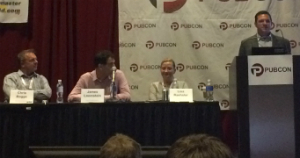
Mark Homer, James Loomstein, Lisa Raehsler and Chris Boggs
Speakers:
Chris Boggs, Founder and CEO, Web Traffic Advisors
Mark Homer, CEO, Get Noticed Get Found, Inc.
James Loomstein, Founder and CEO, Digital Space Consulting
Moderator: Lisa Raehsler, Founder and SEM Strategist, Big Click Co.
Chris Boggs: So You Want To Build an Agency
Chris Boggs (@boggles) starts by laying out his agenda, as follows:
Agency Models: Small to Large
Subject Matter Expert Client Services Expert
Training and Thought Leadership
A Couple Quick Hiring Ideas
Agency Models
What type of agency?
SEO
Paid media
Social media
Analytics/conversion
All of the above – full service integrated
As long as you can deliver consistently on any of these channels, you can succeed as an agency. However, the one-channel agency is more of a dying breed, and integrated agencies are more along the lines of what’s coming out. You need some chops across the board to pull that off.
If you’re building an agency and just going to do one channel, know who will you go to for supplementary services such as web/app development, design/CMS, persona/segmentation, testing lab, industry/vertical focus, public relations. Consider how you will deliver on these if clients ask for them.
There are three types of agency models: small, medium and large.
1. Small Single-Channel Agency
This is a commonly seen model:
Sales in a small single-channel agency can be integrated very easily. There’s great continuity between sales and service because they may be the same person in a small model.
Often growth occurs at the bottom quickly without keeping the right ratio of experience. This can win or fail.
2. Medium Multi-Channel/Discipline
This is a split-specialties model:
Clients may have an unreasonable expectation sometimes that the CEO is available to help them. There’s a split between media (specialties), UX/dev, sales and marketing, and operations. This is one of the easiest ways to start to scale at a mid-sized level. Client services live under each of the segments. The difficulty with this model is scaling while maintaining margin. To best support your margin efforts, have in place the nice structure so you can deliver more hours on a lower-rate employee.
3. Large Multi-Channel/Discipline
This is a client team model:
You end up having hubs of teams across your agency that can deliver for the client. The goal is to upsell a client across all your horizontals. This model provides a useful way to show you have expertise across all these industries.
Scaling this model:
Operational efficiency is the key to this model.
Subject Matter Expert Client Services Expert
The SME (subject matter expert) and AD (account director) are different but serve the same clients. His biggest tip from his experience: You have to name one as senior to the other. If you have one leader, then the buck stops somewhere.
Thoughts on Thought Leadership
Many larger agencies have moved away from having writing- and speaking-focused gurus, yet the concept of developing thought leadership is gaining importance across industries. It serves two purposes:
Establishing credibility within industry and outside
Ongoing continuing education is required for true thought leader
Training is essential for building and growing an agency.
Ongoing formal training is paramount to success in growing employees. Too many agencies just say, “Sink or swim.” Important to train on execution plus reporting and customer service, too. He suggests using multiple variants of reporting templates and other items that are consistent.
Partners should provide training (e.g., BrightEdge).
Training allows leaders to gain respect and credibility (ties into broader thought leadership). Trainers should always learn something from interacting with their trainees, otherwise you aren’t doing it right!
Takeaways:
Mark Homer: Building a Team
Mark Homer (@mark_homer) says to use the lessons from influence, conversion optimization and psychographics to build your rock star agency team. He’s started three startups. He’ll focus on the topic of hiring since that’s what he’s been doing a lot of recently.
Who has time for hiring when you’re managing people, managing clients and managing profit and loss (finances)? Today, agencies can get 300 applicants for a single job posting because of automated bots firing people’s resumes at them based on preset criteria.
How can we solve this challenge:
Reduce time of recruiting
Find more quality candidates
Filter out bad candidates
Increase chance of candidate saying yes
The answer is to practice what we preach! Use psychographics, psychology of influence and conversion optimization!
Psychographics: Facebook
To reach better candidates, fill potential candidates’ streams with your job ads (sponsored posts). Filter by:
Geography (within x miles of our office)
Degree
Current occupation
LinkedIn Outreach
Manually search and filter for schools, past companies, location. Then send InMail. He says this letter is gold:
He gets emails back with three potential responses:
Thanks but I’m not looking.
Oh, my friend is looking!
Funny enough, I’m looking!
Influence: Increase YES Post-Offer
Apply the principles of Influence (from the book by Robert Cialdini) to your agency’s hiring practices. Here’s what Homer came up with.
Scarcity: Make candidates jump through hoops a little more. For example, ask every candidate to record a video to apply. He suggests saying, “Create a YouTube video entitled ‘GNGF Awesome and Fun Interview Video – [Your Name]’ that tells us creatively 1) Why you are awesome and fun, 2) Why you want this opportunity, and 3) Why you want to work at GNGF.”
Note: Ask them to provide five references and only call the last two.
Social proof: Your applicants’ videos are now creating social proof. Look at how many videos are being submitted and viewed and making your company look cool and in demand.
Liking: They created a compilation video of clips from all the videos people submitted. This shows potential applicants that other people similar to them are applying.
Commitment and consistency: If people commit, orally or in writing, to an idea or goal, they are more likely to honor that commitment.
The results of using these new application requirements:
James Loomstein: Growing Our Agencies
James Loomstein (@jloomstein) begins with sports analogies. Chris Paul is a pointguard who plays for the LA Clippers. His job is not about moving the ball up the floor. His job is to make sure everyone is doing their part. When running an agency, you have to make sure everyone is doing their part. Your agency is like a NASCAR pit crew. There’s a team and each person has a specific role. They work together to make the car go around the track as fast as possible. All the cars on the track are using the same tools and going around the same track and playing by the same rules. What makes one team better than every other team? The people.
Everything builds on the previous thing. Everyone knows where everyone’s going. Everyone knows their role to play on the team. Everyone knows what to do next. It’s not directionless.
The advertising model is changing. The problem that we have to solve is tying actions and activities to results and ROI. It’s impossible for anyone or agency to be a master of everything. The one-stop digital shop is a dying breed. The overhyped 500 employee agency is falling apart. Microspecialists are the agencies that are winning. Be specialized in something, like the NASCAR pit crew.
The bigger problem is the changing ecosystem around the client:
The client is looking for all their agencies to play in the same playground together. You don’t have to be everything to everyone. Be hyperfocused on something and grow, scale and get known for “the thing.”
What’s happening?
Agencies are doing everything and nothing is happening.
Your agency needs to understand your core offering and find your superpower (everyone has a superpower).
How you grow is:
Understand the story you tell, and tell a story people want to hear.
Learn what to say to prospects when you’re not for them.
Remember that if you’re everything to everyone, then you’re nothing to anyone.
The problems you face with your agency are scalability and repeatability. The ability to say “we’re not for you” is a big shift and a big way to grow. It’s hard to do!
Does this sound like you?
Increased sales
Lower % growth revenue
Higher overhead costs
Decreased specialization
Smaller YOY incremental growth
There has to be a better way. Decide on the type of agency you want to be and what services to offer:
Growth
Lifestyle
Sector
Specific industry
Strategic solution (app development)
Decide your long-term goals for building an SEM agency. Which matters more to you?
High Growth: Focused on growing fast to maximize valuation so you can sell the agency.
Lifestyle: Focused on quality of life, building a well-paying job that supports your lifestyle outside work.
How You Scale Your Growing Agency
Millennial Expectations and Search Behavior Trends with Google’s Gary Illyes
Millennial Expectations and Search Behavior Trends with Google’s Gary Illyes was originally published on BruceClay.com, home of expert search engine optimization tips.
Getting to know millennials has been a hot topic at Pubcon Las Vegas 2015. Everyone’s talking about millennials, including Google’s Gary Illyes (who’s a millennial himself!). He took the stage to deliver the grand finale keynote, and he’s going to tell us how Google is thinking about millennials and how they’re shaping the future of search.
Generation Y and Z Millennials
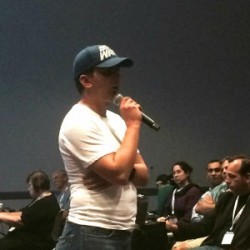 Generation Y Fast Facts
Generation Y Fast FactsBorn between 1980 and 2000
Grew up with changing technology quite educated
Always connected
Social
Firsthand experience with instability
(Illyes is part of this generation.)
These people are:
Egocentric
Independent
Confident
Open to change
Needy
Impatient
Have a short attention span
You can learn everything about them. All their information is on Instagram, Facebook, etc. They love selfies, even though they are not the “selfie generation.”
46% of millennials are interested in starting and running a small biz
35% of employees mill have started their own business on the side to comp their income
2/3 of them want to created a positive impact on their local communities
40% believe they are capable of global impact
In 2000 the average attention span was 10 seconds. In 2013 it was 8 seconds. How long is the attention span of today’s Generation Z? Read on.
Generation Z Fast Facts
Born between 1995 and now
Born into a crisis period
Highly educated
Highly connected
Less “social”
This is the selfie generation. They, too are egocentric. They are also:
Independent
Open to change
Needy
Impatient
Short attention spans (an estimated 2.8 seconds)
Connecting with Generations Y and Z
These two generations are very similar. They will abandon your site without thought if you don’t provide the information they’re looking (and they know precisely what they’re looking for), they will leave. If you don’t pay attention to their unique personalities, they will leave your site. If your site loads too slowly, they will leave your site.
Google cares very much about the user. And Google wants to fulfill all their expectations. These are search features and updates they’ve launched to move forward Google’s ability to serve users:
The mobile-friendly update
Google Now (an assistant that needs more work and requires input from the user), app indexing
Now on Tap (on Android, if you’re inside an app, you can long-press the home button and get info on the context from within the app)
voice search (you can ask a succession of questions and each following query builds on top of the previous context)
Accelerated Mobile Pages (AMP, just launched yesterday)
Many more launches to help the users are coming.

Image from Think With Google’s “Micro-Moments: Your Guide to Winning the Shift to Mobile”
Search is becoming location aware. If you’re in front of a restaurant and you ask your phone “What are the opening times?” Google will answer, knowing which restaurant you’re in front of. Google’s goal is to build the personal assistant (think of the movie “Her” but less creepy).
Here’s a practical tip for making your content useful for this audience. Use callouts or bubbles: put part of a sentence that answers the specific question that got your user to that page. Users don’t read whole articles anymore (remember their abbreviated attention span?). Users need quick bite size information on the page they consume really fast. If you can also add the question, that is great, too.
If your site doesn’t load in 2.8 seconds (the length of Gen Z’s attention span) then Gen Z will leave your site.
Make users feel special and make their life easier. Something like autocompleting their info on your forms is going to stick with them as something awesome about you that they want to come back for.
Dos:
Create original content with care – shocking?!
Make sure users find the info fast – it should be easy to find with a quick scroll
Have bite-sized info where possible – or at least highlight important parts of content
Leave your community up – don’t remove comments, forums, UGC, but do moderate. UGC is great for your site unless it’s spammy or low quality
Don’t:
Construct your pages for search – a page that’s not designed for users will hurt you most with your users because they won’t like it, hit back and leave you
Optimize for information you don’t have
Send all your visitors to other sites – this refers to affiliate sites
Rely solely on widely available data – you’re not the first to think of aggregating lyrics or list all the phone numbers. If you’re in that business, you have to provide more.
How many of you ask this question at the end of the day: how many visitors have I had today? That’s the wrong question. You want to ask: How many visitors did I help today?
Q&A with Gary Illyes
Question: Is it important to remove thin content for the Panda penalty?
Panda isn’t a penalty. Removing thin content will just decrease your ranking even more. You want to overwhelm the site with thick content to satisfy users’ desire for information. If you have poor content and spammy UGC, feel free to remove it. Spending time assessing what’s thin content on your site, instead spend it creating rich content users will love.
Question: What’s going on with the local pack’s constantly fluctuating state?
They’re trying to remove stuff users don’t interact with. You may see lots of experiments where a feature or component on the SERP one day and not the next, that’s a “one-percent experiment.”
Question: Google is good at understanding keyword intent. Why can’t Google get good at resolving NAP consistency issues for local SEO?
Gary says it’s good feedback and a good idea he’ll bring back to the team.
Question: Negative SEO campaigns – are they effective and what’s Google doing to get rid of them?
He’s looked at a dozen supposed negative seo cases and he didn’t see one that was actually a problem with negative SEO. It was always something else. If you see something weird, put it in a disavow file.
Question: Any Search Console changes we should look out for?
We are working on updating the indexes feature. Index data more accurate, more useful, and probably also more examples of what URLs Google has indexed. Other than that they’re also looking at bringing rich snippets into analytics data. And want to figure out how to present the numbers because they can be very twisted. It’s quarters away.
Question: An update on referrer spam in analytics?
No. He doesn’t work in analytics. The analytics team knows about it and is working on it.
Question: Scraped content – how much of a problem is it for the original website?
Gary thinks they do pretty good determining the content creator and serving that version over scrapers. Sometimes it doesn’t work. If you are outranked by a scraper, in most cases there’s something holding back your site.
Question: There used to be monthly webmaster updates and the search community loved it. Why not start that back up?
People were literally dissecting every single world and coming up with theories of how it affected their rankings and it had no effect. People were focusing on things that they shouldn’t. Search is not that complicated. There are a few basic rules that if you follow then you will rank pretty well. People liked the updates but we also got way more questions and the overall quality of pages in the U.S. declined several points and when we stopped those updates, the quality climbed back up. You are SEOs. You are doing a great job promoting content. Concentrate on that.
Editor’s Addendum: Millenials in Context
Back at the BCI offices, Pubcon livebloggers Kristi Kellogg and Virginia Nussey came across this SNL skit emphasizing some of the Millenial characteristics Illyes describes. It may add some context to the conversation. Or just a chuckle. 
Hacking Art History to Make Content Stand Out: Liveblog of Katy Katz @Pubcon
Hacking Art History to Make Content Stand Out: Liveblog of Katy Katz @Pubcon was originally published on BruceClay.com, home of expert search engine optimization tips.
Katy Katz (@KatyKatzTX), Content Director at Inturact, got her BA in art history, and today at Pubcon Las Vegas 2015, she’s delivering a talk on how hacking art history can actually help with content creation. Looking at the epic paintings of the past and how artists have crafted them gives content marketers fresh insight into creating quality, high-impact content, according to Katz.
Most people forget 90 percent of what you share, she says. Good content won’t cut it anymore. It has to be great. Like Rand Fishkin said in his Pubcon keynote, your content has to be 10 time better than everything else (full coverage of that session here). Read on for tips from Katz, based on the lessons she’s learned from the great artists of history.
Tips We can Learn from Experts of the Past
1. Your customer should easily see himself in your content. In these images of Jesus, for example, he’s portrayed differently for each audience. To do this, you have to know your personas.
2. Condition your customer with your intent.
3. Weave in a familiar story. Familiarity works because the brain is primed to pay attention to something that it recognizes. It takes less time for your brain to categorize familiar information.
4. Begin your content design with the end in mind.
5. Have a signature style. Personality should be woven into all your communications. Ultra-professional is boring. Be yourself and be consistent.
6. Appeal to human emotion. We crave content that reminds us that life is short, that dreams come true, that we matter, that surprises us, that encourages us to never give up, etc.
7. Bring the message to them. For example, Michelangelo put his paintings where people would see them, like the Sistine Chapel.
8. Back to basics: color theory. 85% of shoppers place color as a primary reason for why they purchase a particular product. Understand what the colors in your headers, calls to action and images are actually doing.
9. Be wary of peripheral bias. You can draw the eyes to different areas of your blog posts – pullouts, etc.
10. Be ahead of you time. Just be better than everyone else. Have a unique style that’s unlike anyone else’s, a la Marc Chagall.
11. Don’t be afraid to take a few risks. Katz uses what the 70:20:10 theory, which dictates 70% of your time should be focused on your bread and content. 20% on epic, creative content. 10% on edginess and taking risks.
Here’s Katz’s slide deck:
October 8, 2015
The High Cost of Free Traffic: #Pubcon Keynote by Wil Reynolds
The High Cost of Free Traffic: #Pubcon Keynote by Wil Reynolds was originally published on BruceClay.com, home of expert search engine optimization tips.
In this session at Pubcon Las Vegas, keynote speaker Wil Reynolds (@wilreynolds), founder of SEER Interactive, talks about why it’s vital for brands to be creating “content that’s worth paying for.” Follow along in his slide deck below as you read what Reynolds said in this liveblog.
The High Cost of Free Traffic from Wil Reynolds
The High Cost of Free Traffic
In the last six months, Wil tried to achieve SEO results with paid search tactics.
In Las Vegas, we’re probably all staying at a hotel. Look for a “Las Vegas hotel” SERP and find the lonely, sidelined organic results.
Guess the CTR of the No. 1 spot? It’s impossible. (See Reynolds’s 25+ Reasons why predicting CTR from Rankings is Impossible.)
He introduces the idea of Diminishing Margin Utility with an example. The first hot dog is delicious. The 50th hot dog, not so much. When you try so hard to achieve a top ranking and find out that you’re getting a 1.574 click through rate and the No. 4 result has a 1.4 CTR … that’s diminishing margin value.
It is a paid world. A lot of us will say that Google only cares about paid ads, but remember that Facebook is not much different. Users don’t see organic content. Your traffic isn’t free. The idea of organic being cheap is wrong. Re-do your occasions, because we’ve all basically been tricked. Start looking at the CTR of the keywords you have highly ranked, and that should be what helps you determine how much time and effort to put into these things.
The question is not whether or not to go into paid. It is: What are you building that is worth paying for people to see?
What have you built that you’d pay for people to see? In a paid world, if you’re not writing content that’s worth paying for, you just have a slice of organic that’s not worth seeing.
The total audience for your content is greater than the searching audience for your content. Who here searched for “SEO conference” before they arrived here at this SEO conference? Maybe 4 out of 2,000?
What does that mean for the marketer/SEO focusing on organic only? Good luck. It’s shrinking. This is the largest Pubcon ever, and the business is growing without people searching to get here. This is a reminder that well-executed organic is costly.
If you’re running a ranking report and not looking at the search results page, then you’re not going to see the direct answer boxes and other SERP features that compete with organic spots.
Wil’s not saying to give up on organic. Fight the good fight. Pivot.
First of all, we have to agree on what’s great content.
Example 1: Serious Eats
Look at the Serious Eats definitive guide to steak: http://www.seriouseats.com/2014/12/food-lab-guide-to-prime-rib.html
They’ve inserted things that are relevant that help cook a better steak (such as Q: What tools will I need?). The content goes on and on, and you learn something. For instance, did you know a Delmonico steak is a rib eye? Read the article (sorry, vegetarians) and now you know. How do you feel about SeriousEats.com now? Would you go there again?
It’s worth mentioning here that this story started with Wil looking at Twitter and seeing a post by Rand Fishkin linking to a Serious Eats article on the best way to grill steak. This didn’t start with a search.
Think of the psychology of what happens. He reads the article. He cooks an amazing steak. People compliment him on it. He feels better about himself. He connects that feeling with Serious Eats. Now the brand is causing him to go back when he wants to cook salmon.
Example 2: AirBNB
Search for “AirBNB London” — they’re destroying vacation rental keywords because people aren’t searching for that generic keyword. Check Google Trends; you’ll see that “vacation rentals” is going down and “AirBNB” queries are going up.
Make People Feel Good about Themselves
Reynolds quotes from Buffer (@buffer): “People don’t buy products. They buy better versions of themselves.” (See the full article on Buffer Social here: bit.ly/why-people-buy.)
Think about whether your content is making people feel better about themselves and high five-worthy. To compare to the Serious Eats example, the WikiHow “How to Grill a Steak” article is dense with ads. How does that make you feel? Reynolds says, “I’m being sold to. WikiHow doesn’t care about me and making me a better griller.”
How much time have you spent on what makes people buy? Reynolds admits that if you look at how much time he’s invested in figuring out how search engines work and how much time he’s spent understanding why people buy, “it’s a travesty.” Instead of trying to deconstruct the search engine algorithm, now he’s looking at psychology and what makes people happy. Books like “Switch” help him see why people buy.
How Feeling Good (about a Brand) Affects People
Let’s talk about the brain. The medial orbital frontal cortex lights up when people see brands they recognize. While doing a test on brain activity using an MRI looking at this part of the brain, researchers gave people wine. They told them it was $90 wine. They then gave them wine they said was $10/bottle. Researchers found that people feel much better about themselves when they think they’re drinking the good stuff.
Example 3: Michelin
There’s a book about content marketing written in 1900. The Michelin company in 1900 sold more tires with content. The company realized that as people wore down their tires, they’d need to buy new tires. And they knew that branding could cause people to buy stuff. They thought that if they could get the chauffeur to drive more, they’d make more tire sales. So Michelin launched a series of books: The Michelin Guide to Restaurants in the French Countryside. (Michelin-rated chefs are a result of this project.) The company knew that if they gave these books to more chauffeurs, they’d drive the French countryside more, they’d give their clients an experience of new restaurants, and those clients would feel special telling their friends about new, exclusive places they’d dined. (Reynolds heard this story from Kieran Bass (@kieranbass).
He’s asking clients today: Do I have your trust to spend 3–5 percent of your marketing budget on getting people to love your brand? When they do a good job with that, the next year he asks clients for 10 percent.
Example 4: W Hotels
Business executives who travel, Reynolds shares how W Hotels turned an empty room into a PR opportunity. On his way to New York recently, he had this exchange on Twitter:
When he arrived at the hotel for early check-in, the front desk clerk told him no rooms were available. But someone else walked up and said, “Mr. Reynolds? Your room is ready.” The social media team had taken care of his request by upgrading him to a suite. Later, Reynolds shared the story in an article for Entrepreneur magazine. PR win.
Example 5: Amazon
Reynolds quotes, “The greatest trick the devil ever pulled was convincing the world he didn’t exist.” Amazon founder and CEO Jeff Bezos “is the best SEO” despite his stated dislike of search engine optimization. Amazon has a 74 percent conversion rate. “Pay with Amazon” in your meta description is going to give people a signal that you have easy checkout.
The best innovations he’s ever thought of have come when he’s taken the easy solution off the table. Take the website out of the equation. Remove friction. For example, Amazon has launched Dash buttons — a 10x idea that delights customers and removes friction.
Remove Friction, Refresh Content
Look for where your business is making it harder for people to engage with you and fight to remove it. How would you improve the rankings of your business if someone told you that you couldn’t change your website? Take that easy solution off the theoretical table, and you’ll come up with something innovative and different.
Go BIGGER. He’s having his company write less content and refresh old content. Look at your analytics and see how old the top visited content is. Look at that content and ask yourself how it can be freshened up. “Write less new stuff; go back and make sure the old stuff is still valuable.”
Example 6: SEER’s Best Content
Reynolds’s Screaming Frog guide ranks No. 1, but it’s out of date because Screaming Frog has a newer version. So what if he gets the click? The content won’t solve the visitor’s problem.
Think about this. His company created one piece of content — a guide for helping clients get more from Pinterest. Creating it took:
11 people
200–300 hours
$900 in promotion
0 link building
0 outreach
It is now the most searched guide with his company brand name. TIP: Do the alpha character test with your brand name at the front of the search box to see if anyone’s looking for your branded content.
A search on Topsy reveals that tons of people are resharing that guide. Someone even thanked Wil for an ad he ran with the content. When does anyone ever thank people for ads?! When you have really great content.
More results: The guide was included in the Moz Top 10. The guide ranked on the first page of Google. An email from a trusted source improved the guide’s ranking. When SEER first launched this guide, there were four guides ranking. They’re moving up and expect to bump off even Pinterest’s own guide in the rankings.
Questions:
Name the companies you think show up for “SEO 101”.
Which result is the least likely to show you pop-ups?
Who loves pop-ups?
Serious Eats is slicing and dicing the golden cow. They dominate SERPs for things like “rib eye vs.” and “best steak for.” When you’ve spent hundreds of hours creating a good piece of content, it’s easy to slice and carve off more content like it. Subsequent content gets easier when you build one thing that’s great.
‘Make Less Content’ and Other Tips
He wants us to commit to making less content. Reap the later organic benefits. Write something that makes people start searching for the brand after reading something else that made their life better.
Reynolds recommends “Nudge” as a great book to read. Seek to understand the audience that would be leveled up if they found your content. Remember, paid is your friend. You can target your audience in a very granular way. You can exclude and negative match keywords, and you can target net worth, relationship status, and interests.
Use Keywordtool.io — Drop in your brand name and see what people are searching for.
If your content was removed from the web, would anyone miss it?
The High Cost of Free Traffic: Pubcon Keynote by Wil Reynolds
The High Cost of Free Traffic: Pubcon Keynote by Wil Reynolds was originally published on BruceClay.com, home of expert search engine optimization tips.
In this day four session at Pubcon Las Vegas, keynote speaker Wil Reynolds (@wilreynolds) talks about why it’s vital for brands to be creating “content that’s worth paying for.”
The High Cost of Free Traffic
In the last six months Wil tried to achieve SEO results with paid search tactics.
In Las Vegas, we’re probably all staying at a hotel. Look for a “Las Vegas hotel” SERP and find the lonely, sidelined organic results.
Guess the CTR of the #1 spot? 25+ Reasons why predicting CTR from Rankings is Impossible
Diminishing Margin Utility. The first hot dog is delicious. The 50th hot dog, not so much. When you try so hard to achieve a top ranking and find out that you’re getting a 1.574 click through rate and the #4 result has a 1.4 CTR …
It is a paid world. A lot of us will say that Google only cares about paid ads, but remember Facebook is not much different. Users don’t see organic content. Your traffic isn’t free. The idea of organic being cheap is wrong. Re-do your occasions because we’ve all basically been tricked. Start looking at the CTR of the keywords you have highly ranked and that should be what helps you determine the time and effort to put into these things.
The question is not whether or not to go into paid. It is: what are you building that is worth paying for people to see.
What have you built that you’d pay for people to see. In a paid world, if you’re not writing content that’s worth paying for, you just have a slice of organic that’s not worth seeing.
The total audience for your content is greater than the searching audience for your content. Who here searched for “SEO conference” before they arrived here at this SEO conference? 4 out of 2000?
What does that mean for the marketer/SEO focusing on organic only? Good luck. It’s shrinking. This is the largest Pubcon ever, the business is growing without people searching to get here. This is a reminder that well executed organic is costly.
If you’re running a ranking report and not looking at the page, then you’re not going to see the direct answer boxes and other SERP features that compete with organic spots.
Wil’s not saying to give up on organic. Fight the good fight. Pivot. First of all we have to agree on what’s great content.
Look at the Serious Eats definitive guide to steak: http://www.seriouseats.com/2014/12/food-lab-guide-to-prime-rib.html
They’ve inserted things that are relevant that help cook a better steak (Q: What tools will I need). The content goes on and on and you learn something. For instance, did you know a Delmonico steak is a rib eye? Read the article (sorry vegetarians) and now you know. How do you feel about seriouseats.com now? Would you go there again?
It’s worth mentioning here that this story started with Wil looking at Twitter and seeing a post by Rand Fishkin linking to a Serious Eats article on the best way to grill steak. This didn’t start with a search.
Think of the psychology of what happens. He goes to Serious Eats. He cooks an amazing steak. People compliment him on it. He feels better about himself. He connects that feeling with Serious Eats. Now the brand is causing him to go back when he wants to cook salmon.
Search for “AirBNB London” – they’re destroying vacation rental keywords because people aren’t searching for that generic keyword. Check Google Trends to see that “vacation rentals” is going down and “AirBNB” queries are going up.
People don’t buy products. They buy better versions of themselves. @buffer bit.ly/why-people-buy
Think about whether your content is making people feel better about themselves and high-five- getting worthy. To compare to the serious Eats example, the WikiHow “How to Grill a Steak” article is dense with ads. How does that make you feel? I’m being sold to. WikiHow doesn’t care about me and making me a better griller.
How much time have you spent on what makes people buy? If you look at how much time he’s invested in figuring out how search engines work and how much time he’s spent understanding why people buy, it’s a travesty. Instead of trying to deconstruct the search engine algorithm, now he’s looking at psychology and what makes people happy. Books like “switch” help him see why people buy.
Let’s talk about the brain. The medial orbital frontal cortex lights up when people see brands they recognize. While doing a test on brain activity using an MRI looking at this part of the brain, they gave people wine. They told them it was $90 wine. They then gave them wine they said was $10/bottles. People feel much better about themselves when they think they’re drinking the good stuff.
Look at your analytics and see how old the top visited content is. Look at that content and ask yourself it can be freshened up. “Write less new stuff; go back and make sure the old stuff is still valuable.”
There’s a book about content marketing written in 1900. The Michelin company in 1900 sold more tires with content. The company realized that as people wore down their tires, they’d need to buy new tires. But they knew that branding could cause people to buy stuff. They thought that if they could get the chauffer to drive more, they’d get more tire sales. Michelin launched a series of books: The Michelin Guide to Restaurants in the French Countryside. Michelin rated chefs are a result of this project. They knew if they gave these books to more chauffers, they’d drive the French countryside more, and they’d give their clients an experience of new, unknown restaurants, and those clients would feel special telling their friends about new, exclusive places they’d dined. (Wil heard this story from Kieran Bass (@kieranbass).
Wil’s asking clients today: do I have your trust to spend 3-5% of your marketing budget to tie into getting people to love your brand. When they do a good job with that, the next year he asks people for 10%.
Business executives that travel – turned an empty room into a PR opportunity.
“The greatest trick the devil ever pulled was convincing the world he didn’t exist.” Jeff Bezos is the best SEO. Amazon has a 74% conversion rate. “Pay with amazon” in your meta description is going to give people a signal that you have easy checkout.
The best innovations he’s ever had have come when he’s taken the easy solution off the table. Take the website out of the equation. Remove friction. Amazon Dash Buttons – a 10x idea that delights customers and removes friction.
Look for where your business is making it harder for people to engage with you and fight to remove it. How would you improve the rankings of your business if someone told you that you couldn’t change your website. You’ll come up with something innovative and different.
Go BIGGER. He’s having his company write less content and refresh old content. His screaming frog guide ranks #1 but it’s out of date because screaming frog has a newer version. So he gets the click? It wouldn’t solve the visitors problem.
Think about this. His company created 1 piece of content – a guide for helping clients get more from Pinterest.
11 people
200-300 hours
$900 in promotion
0 link building
0 outreach
It is now the most searched guide with his company brand name. Do the alpha character test with your brand name at the front of the search box to see if anyone’s looking for your branded content.
A search on Topsy reveals that tons of people are resharing that guide. Someone even thanked Wil for an ad he ran with the content. When does anyone ever thank people for ads!? When you have really great content. More results: the guide was included in the Moz Top 10. The guide ranked on the first page of Google. An email from a trusted source improved the guide’s ranking. When they first launched their guide there were four guides ranking. They’re moving up and will even bump off Pinterest’s on guide.
Questions:
Name the companies you think show up for “SEO 101”?
Which is the least likely to show you pop ups?
Who loves popups?
Serious Eats is slicing and dicing the golden cow. They dominate SERPs for things like “rib eye vs.” and “best steak for.” When you’ve spent hundreds of hours creating a good piece of content, it’s easy to slice and carve off more content like it. Subsequent content gets easier when you build one thing great.
He wants us to commit to doing less content. Reap the later organic benefits. Write something where people start searching for the brand after reading something else that made their life better.
“Nudge” – a great book to read. Seek to understand the audience that would be leveled up if they found your content. Remember, paid is your friend. You can target your audience very granularly. You can exclude and negative match, you can target net worth, relationship status, and interests.
Keywordtool.io – drop in your brand name and see what people are searching for.
If your content was removed from the web, would anyone miss it?
Reputation Management: How to Un-trash Your Brand – #Pubcon Liveblog
Reputation Management: How to Un-trash Your Brand – #Pubcon Liveblog was originally published on BruceClay.com, home of expert search engine optimization tips.
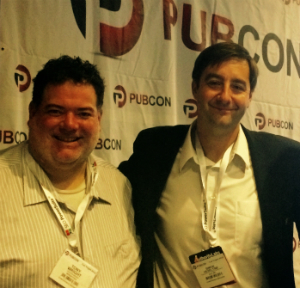
Tony Wright and Simon Heseltine
What happens in Vegas may stay in Vegas, but what happens online spills into the real world and affects brands and businesses in a major way. Live from Pubcon Las Vegas 2015, Simon Heseltine (@SimonHeseltine), senior director of audience development at AOL, and Tony Wright (@TonyNWright), CEO and founder of WrightIMC, are giving an example-packed presentation titled “Reputation Management: How to Un-trash Your Brand” on the ins and outs of online reputation management.
Heseltine is up first, and he’s going to share the way people and brands fail at online reputation management, before he turns it over to Wright — who will share how to combat the fails.
Trashing Your Brand – or, Online Reputation Management Fails
Heseltine opens with a quote from journalist Jon Ronson: “In the old days people used to say the Internet is not the real world. I don’t think anybody believes that anymore. Because something that happens to you on the Internet can impact your life in the real world.”
How People Trash Your Brand
People often have no common sense and share completely inappropriate things, like the chef from Chili’s posing shirtless in the restaurant’s kitchen. People like him get fired.
Posting a racist tweet that has nothing to do with your job? You’ll get fired.
Posting “I hate my boss or job” under accounts where you’re using your real name? You’ll get fired.
And even if you’re using a private account, other people can share those inappropriate things you’ve shared.
These are the reasons why, when you apply for a job today, some applications actually ask, “Is there any adverse information about you that we could find on the web?”
Other examples of reputation management fails? Community managers can sometimes get their wires crossed and post what’s meant to be a personal post on their public profile. Sometimes they have egregious typos that align your brand with unsavory things. Take the Associated Press, for example, tweeting that Yogi Bear had died when, in fact, they meant Yogi Berra.
Take Jared Fogle, for intance — when he was arrested, the No. 1 trending topic on Twitter was Subway, even though he’d been let go a long time ago.
How Your Brand Trashes Itself
Brands fail when they don’t pay attention to timing. Hot Topic sent out an email with a subject line reading: “These Dead Animals are Adorbs,” promoting animal skeleton characters on their teen clothing … the day after Cedric the lion was killed by the infamous dentist.
Companies also fail when they ignore the context of a post: “A good traveler has no fixed plans and is not intent on arriving.” This quote from Lao Tzu is not bad at all. But it’s bad when Amtrak tweets this quote.
Answer in a timely manner. VitaminWater changed their flavor. The Internet was upset and posted many, many comments to their Facebook page. It took VitaminWater 24 hours to respond. #Fail
Zales had an important sale on Sept. 11, then had signs saying “Ask us about 9/11.” #Fail
Benefit Cosmetics used the hashtag #MakeaMovieaFatty. There’s no reason for a brand to use a hashtag like that. #Fail
Untrashing Your Brand
Tony Wright is now going to tell us how to untrash your brand. His talk “isn’t about removing negative items or doing proactive reputation management,” he says.
One way not to fix your brand reputation? Injecting illegal code into hacked websites.
Trying to “remove” bad listings from the SERPs? You’re doing it wrong. ORM is truly the management of your reputation, not the controlling of your reputation. Anyone offering a quick fix is lying at best — they may even be conning you. The only way to combat a bad online reputation is to create a better one.
The only way to combat a bad online reputation is to create a better one. –@TonyNWright #ORM
Click To Tweet
Are you monitoring your online reputation frequently? With an adequate tool?
Are you telling your side of the story now? (When a crisis hits a blank space, the blank space doesn’t win.)
Do you have relationships with influencers in your space?
Do you have a social media policy for employees in place? Do they know what they can and can’t post about your company? Some of the worst things that happen are when a crisis hits a company and then the employees take to social media to defend the company — this can go really mad really quickly.
“Trying to do PR during a crisis is like trying to eat a salad during a heart attack.” — Wright
Trying to do PR during a crisis is like trying to eat a salad during a heart attack. –@TonyNWright
Click To Tweet
The New Tenants of Online Reputation Management
Always tell your side of the story and make sure it shows up.
Make sure your side of the story is palatable to your target audience.
Seed the SERPs — don’t expect to replace them.
Use proper channels for response to negative items.
Know Your Audience
Brands can take a stand in what they believe in IF they know their audience will support them.
Not knowing your audience will multiply the effect of mistakes.
Investing time and money in knowing your audiences is one of the best things you can do for all your marketing channels.
We Messed Up. Now What?
Don’t believe your lawyer — they’re only thinking about litigation, rather than your brand reputation. Hire a crisis consultant.
Don’t admit guilt until you know the whole story.
Don’t kneejerk. Today’s news cycle moves fast, but most of the time you don’t have to move as fast. The current time of a news cycle is two weeks. Example: When’s the last time you thought about Cedric the lion? People get angry and then they go on to the next thing to be angry about.
Things to Do During a Crisis
Be transparent.
Tie your CEO up in a story.
Start your impact analysis.
Monitor.
Consult your lawyer but don’t let him/her dictate the plan.
Remember: The more you put out there, the more you exacerbate a storm. Don’t push it by apologizing if you don’t need to, Wright says.
Large brands typically don’t feel any impact from social media or online crises.
Small consumer brands can be damaged quickly but not permanently.
B2B brands are at risk of permanent damage from online reputation fails.
Lead Generation Tips from Michael King and Alex Harris – #Pubcon Liveblog
Lead Generation Tips from Michael King and Alex Harris – #Pubcon Liveblog was originally published on BruceClay.com, home of expert search engine optimization tips.
Want to up your ante when it comes to generating new, quality leads? It’s a high priority for all brands and businesses, and the gentlemen speaking in this “Lead Generation” session at Pubcon Las Vegas 2015 have tips that can take your #LeadGen game to the next level. Without further ado, here’s the lineup:
Michael King, founder of iPullRank
Alex Harris, creative director at AlexDesigns.com
Moderator: Mindy Weinstein, director of training at Bruce Clay, Inc.
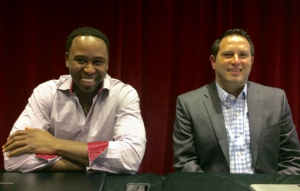
Michael King and Alex Harris
Alex Harris: Winning at CRO
“I’m not a fan of the term CRO — I prefer ‘marketing optimization’ because that’s what we’re doing. Trying to make our marketing more efficient,” says Alex Harris (@AlexDesigns).
Harris came up with a five-point “Marketing Optimization System” to get better results in a shorter amount of time. Here are his steps:
Discovery
Hypothesis (prioritize your efforts based on your top goals)
Execution (wire frames, rapid iterative testing, testing redesigns)
Review (use conversion analysts, determine the quality vs. quantity of leads, build history of wins/losses)
Scale (clone wins for more campaigns, create ads based on voice of customer, content-based)
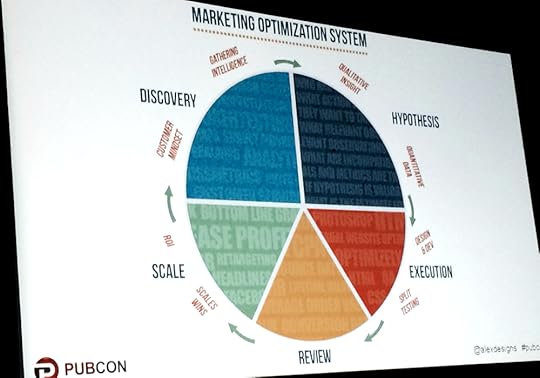
Alex Harris’s Marketing Optimization System (click to enlarge)
Deep Dive into the Discovery Phase
You’re probably already using Google Analytics and have information in your CRM platform. But what are you doing with that data? There are two kinds of data: quantitative and qualitative.
“Every site works on an 80/20 rule — you’re making 80% of your traffic off 20% of your pages,” says Harris. “Understand your top landing pages report — that’s where they’re going directly, and you need to take that existing traffic and make it convert. Those top pages are the pages you should focus on optimizing.”
Digital marketers must also know how they’re getting there in terms of device. You don’t want to optimize for mobile if the traffic’s not actually coming from there. Don’t make assumptions.
The secret to converting them lives in your customers’ minds. This is where qualitative insights come in.
Qualitative tools he likes:
UserTesting.com
SurveyMonkey
HotJar
oLark
LuckyOrange
Qualaroo
ClicTale
Inspectlet
CRO Quick Tips
Add credibility signals. For example, having a Better Bureau Business icon is a credibility signal.
Have text that is easily scannable.
Provide social proof with things like video testimonials or embedded tweets.
Michael King: How to Generate those Leads All Day Everyday: Like a Bawse
Two things are certain when Mike King (@iPullRank) takes the stage: He’s going to share really smart tips, and he’s going to move really fast. I kept up as best I could, but check out his slide deck below to get the full effect of his preso:
How to generate those leads all day everyday from Michael King
“We do a lot of one-night stands in lead generation and not enough long-term relationships,” says King.
Don’t be a one-night stand. Nurture your leads. Think about how to upgrade your content. Idea: Launch ebooks as pages rather PDFs, and then relaunch them as PDFs with lead capture forms.
Tactics that Usually Work
To get lots of marketing qualified leads, create a guide. Put it as a guest post on someone else’s site and link it back to your site. You get a ton of leads. It’s like magic every time.
Pop-ups. You hate them, but your feelings don’t matter. Pop-ups work.
Fly-outs can work.
Advanced Hacks
Pre-browsing directives. You can load things before a user clicks them. Google uses it in the SERPs. King saw a 27 percent increase in page speed when he implemented this on his own site.
Stop retargeting the wrong people. Use a browser fingerprint. It’s a string that represents a computer. A string that is 83 percent original is created, and it stops retargeting from happening.
Data-Driven Personas
You must understand and prepare user personas. First, understand different user types by looking at different traffic types. They come in via different segments. Here’s how you examine it all fast:
Get your mailing list.
Run it through FullContact. This will append users based on their emails. You’ll end up with a nice spreadsheet of their demographic data.
Use Demographics Pro.
Upload your mailing lists to Facebook’s Audience Insights Platform. (You can also do this without a mailing list and do it by interest.)
Segment your data.
Use Acxiom’s Personicx data.
Check against your Google Analytics data.
Build your personas.
Personas dictate your acquisition mix.
Ultimate Content Audit Quick Hit
Align personas with readability scores.
Compare difficulty vs. page value. Pages that are easier to read tend to generate more money.
Use URL Profiler to find the readability score.
Determine your audit size and decide if you’re doing a population-based audit or sample audit. Use ScreamingFrog.
Edit your copy based on readability scoring, which you can activate directly from Word.
Qualifying Leads You Generate
Use FullContact via Webhook to qualify leads based on demographic data.
You can also use this for data around firms.
For call tracking, use CallRail. Their API is incredibly easy to use.
As far as scoring leads is concerned, 80–100 is highly engaged. Less than 40 is very low. 40–80 is medium.
SiteSpy is a great tool for WordPress for lead scoring.
The Future of Search: Duane Forrester’s Pubcon Keynote Liveblog
The Future of Search: Duane Forrester’s Pubcon Keynote Liveblog was originally published on BruceClay.com, home of expert search engine optimization tips.
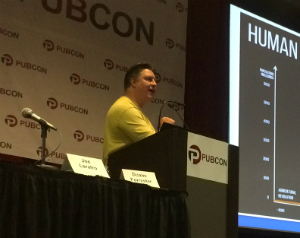 Bing’s face of search, Duane Forrester (@DuaneForrester), is going to deliver a lively keynote at Pubcon Las Vegas 2015. Titled “The Future of Search May Not Be What You Expect,” his stat-packed talk covers many topics, including:
Bing’s face of search, Duane Forrester (@DuaneForrester), is going to deliver a lively keynote at Pubcon Las Vegas 2015. Titled “The Future of Search May Not Be What You Expect,” his stat-packed talk covers many topics, including:
Millennials (the group everyone is trying to market to)
Mobile and wearables
Agents
The future of search
Let’s dive in!
Thoughts on Millennials
Millennials were born between 1982 and 2004. Right now, they are between 10 and 34 years old. Many of them are entering their prime earning years right now. Also, they’re savers.
Millennials want to attach to a brand, but they are not loyal. They’ve watched the world economy melt down, personally. They’ve never known a time when there wasn’t the Internet. If you’re in the banking industry, you have a tough, tough road ahead of you.
They’re not into objects but experiences — if you sell products, stop it. Sell experiences instead.
They spend differently than previous generations, preferring to throw cash at new experiences and adventures and to reward socially responsible companies that they can connect with and deem authentic. It’s easiest to see this change in the food industry, where millennials are helping to disrupt the landscape of casual restaurants and boosting the earnings of chains such as Chipotle and Panera.
Millennials are spending the greatest amount of money in the coming year on fresh fruits, organic foods and natural products. Less favorable, in their minds, is spending on luxury goods, soda, applications and handbags.
An industry that millennials particularly dislike is banks.
Thoughts on Mobile and More
Mobile first means:
More mobile than desktop queries now
Context is critical
Responsive design FTW!
Specific algorithms for mobile now
Forrester says the future of mobile is the seamless blending of the mobile with the functionality of a desktop — Samsung has a patent out for something called Project Arcadia, which will allow users to easily port Android and iOS apps across a billion Windows devices. Imagine a world where laptops and power cords aren’t necessary!
In the next two years, we’ll have ingestibles — we’ll be able to take a pill that will provide information for doctors about the inner workings of our body.
U.S. Starbucks is Winning at Mobile
11% of transactions per week are conducted via mobile devices in-store.
Starbucks has 10 million app users.
Users can:
Make mobile payments
Do digital tipping (and more … see image below)
Forrester says that while he doesn’t enjoy Starbucks coffee, he loves the sense of community that comes with being a Starbucks consumer.
“I crave the moment when I flash my band in front of the register and the cashier is like, whoa that’s cool! I’m blowing minds one latte at a time,” says Forrester.
I’m blowing minds one latte at a time, says @DuaneForrester.
Click To Tweet
Apple Pay and Mobile Payment Benefits
Secure: one-time, random ID per transaction
Phones are always handy
Easy to use; easy to track
Merchant doesn’t see credit card
Bye, Bye Wallet, Hello Freedom!
Affinity programs: make users want to be more involved
Connected accounts
Internalized ecosystems managing point of payment
Biometric-based recognition
NFC and RFID realize their potential
“I have a phablet and I swear I’ll go back. I even edit Power Points on my phone. But the fact of the matter is it’s still a small device. Phones are small devices, so we have to be careful about what we show on these devices,” says Forrester.
Self-Driving Cars
In the next five years, we’ll have self-driving cars on the road — and that signals the end of the physical act of driving an automobile. We’ll be using our time better. During traffic, we can be working. Note:
Self-driving cars will open up huge areas of opportunism for local businesses to interact with “non-driving” drivers.
UK legislation is underway to allow self-driving cars.
Germany, France and Italy have proposed amendments to allow driverless cars.
Connected in-car systems will enable ads, offers and entertainment.
Forrester sees a future where you can catch a ride with branded cars for free via affinity programs — if you’re willing to listen to a few ads: “This ride brought to you by Home Depot.”
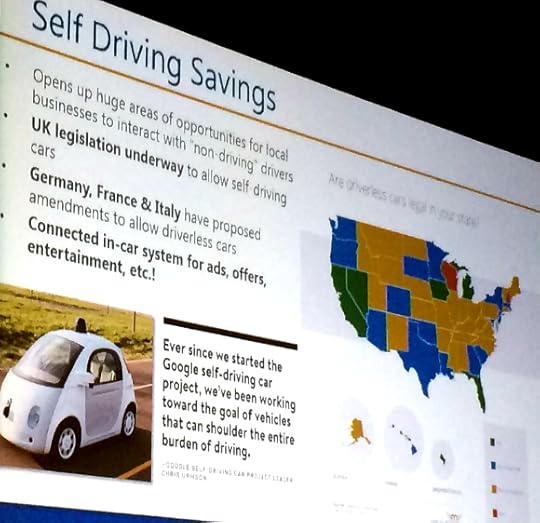
Forrester gives facts about driverless cars; map shows states where they are legal (above)
All Your Data is Out There
Forrester says, “Data is the new oil.” Why? It’s the most valuable commodity in the world and it’s growing exponentially.
Right now, you’re leaking data. Data signals are everywhere. You might be concerned about this … but what can you do? According to the Federal Trade Commissions, Axciom has a minimum of three thousand data points on every single person in the U.S.
Axciom has a minimum of 3,000 data points on every person in the US, per @DuaneForrester keynote.
Click To Tweet
Where Are We Going? Machine Learning
Forrester quotes billionaire magnate Vinod Khosla: “In the next 20 years, machine learning will have more impact than mobile has.”
Forrester agrees. Search systems now have the raw data to start making sense of the world in which they exist. Examples of machine learning at work:
Bing has been able to pick the Eurovision winner.
How-Old.net can look at you and determine your age and gender.
Google machine learning systems learned how to identify faces without explicitly being told how. [Tweet “Google machine learning systems learned how to identify faces w/o being told how – @DuaneForrester”}
We can know everything.
The Future of Search
A time of limitless expectation and technology. Search is advancing:
To be the bridge between a user’s intent and experiences the world has to offer.
To allow users to express themselves in natural, intuitive ways — not just punch keywords.
To become the ecosystem of connected devices that serve relevant information.
One way into all the riches? Use Schema.org.
Agents
Imagine an Agent working for you to:
Watch for concert tickets and buy them.
Scan for discounted airfares to selected destinations and book them.
Proactively search for coupons, sales and announcements.
Accept invitations on your behalf and update your calendar.
Organize your calendar — manage running errands against traffic and other events on your calendar.
Imagine telling your Agent, “I need a cable for my phone,” and not having to think about it again until the cord shows up at your hotel. That’s the reality that’s coming. Your Agent will know what phone you have and what cord you need, where you’re staying, and be able to search to find a retailer who can deliver that phone to your hotel.
Will you be ready for the day search is internal, not external? When search is baked into every touchpoint we have? When it’s no longer a destination page, but something that brings you answers without your asking for them?
When considering the future of search, remember:
Data is critical: sharing it, consuming it, understanding it.
Know what motivates the upcoming generation.
Traditional online marketing is changing now, today.
Stop thinking about driving traffic.
Start think about visitor task completion.
Solve for consumer needs three steps ahead to win.
If you think mobile is coming, you’re already losing.
Read “Future Crimes.” Forrester just read this book, written from a cyber-crime point of view. It dives deep into EULAs and explains coming problems.









